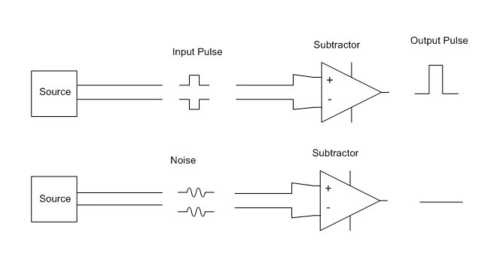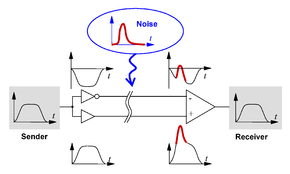
Hardware – Differential Signaling
I’m planning a series of blog posts that delve deeper into the way networking hardware works. This started with an idea for a single blog post on PHY-chips but I found that there were too many fundamental concepts that I was ‘assuming’ were already known. I’m not an electronics expert, but I hope that I can explain just enough fundamentals to help explain the bigger picture.
The first topic I want to cover is called differential signaling. Differential signaling is used in just about every important communication interface; PCIe, SATA, InfiniBand, 10GigE XAUI and many more. I want to cover this because it is a fundamental component of network systems and secondly because it is just simple and elegant engineering.
It’s been a long time since I studied transmission lines and what I mostly learned was how complex it was. High-speed communications circuits are hazardous and noisy environments. Differential signaling is one of the mechanisms designed to protect a high-speed circuit from noise and interference.
How differential signaling works
Differential signaling works by inverting the input signal and sending it along one wire, with the original signal being sent along the other wire in the pair. At the end of the differential pair, there is a subtractor circuit which can recover the original signal as output.

In the first pair of lines in the diagram above you can see that the original signal can be recovered from the subtractor. You can also that when noise in encountered on the line, it impacts both wires in the pair and they cancel each other out in the subtractor, thus eliminating the noise.
That example explains the behaviour of the components, but in reality interference ‘adds’ to the original signal. When noise is experienced on a differential pair, it distorts both the original signal and the inverted copy. Thankfully the subtractor is still able to eliminate the noise. The diagram below shows how it all comes together.

The drawbacks of differential signaling are the need for active electronics on both ends of the circuit and the fact that you need two wires for one signal. This is a simplex circuit, but you would need 4 wires (or PCB traces) for a duplex circuit.
Summary
That’s it. Differential signaling is an elegant and simple yet fundamental component of modern high-speed communications systems. The drawbacks are minor compared with the benefits delivered. We’ll get to see how valuable differential signaling is as the weeks roll on.
Images courtesy of Wikipedia.com
5 thoughts on “Hardware – Differential Signaling”
Differential signaling rejects common-mode noise. To help ensure noise is common-mode, many cables utilize twisted-pair conductors to carry the differential pair. The twisting helps to ensure that any external noise is coupled equally into each conductor.
Thanks for the comment Bob
Ah, now I understand how cable twisting works. Thank you guys.